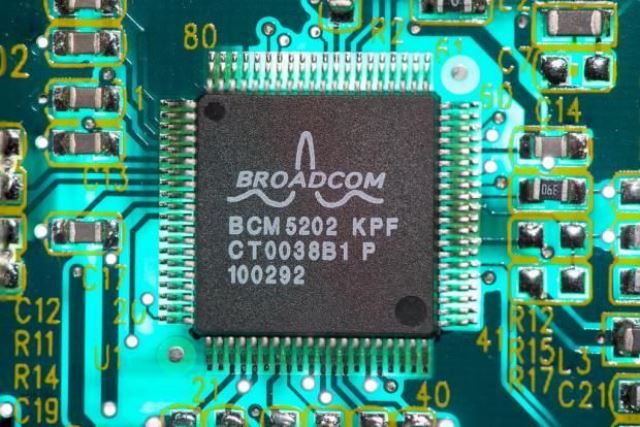Broadcom has provided second quarter revenue guidance of $7.9 billion, and Adjusted EBITDA of 62.5 percent of projected revenue.
 Broadcom expects semiconductor revenue growth will accelerate to 25 percent. Excluding wireless, it will be 35 percent year-on-year.
Broadcom expects semiconductor revenue growth will accelerate to 25 percent. Excluding wireless, it will be 35 percent year-on-year.
“Broadcom’s record first quarter results were driven by strong enterprise demand, and investments in next generation technology by hyperscale and service providers,” said Hock Tan, President and CEO of Broadcom. “Our second quarter outlook projects year-over-year growth to accelerate.”
Broadcom revenue grew 16 percent to a record $7.7 billion and operating profit increased 23 percent for its first quarter of fiscal year 2022, ended January 30, 2022.
Broadcom’s semiconductor solutions revenue grew 20 percent to $5.9 billion and infrastructure software revenue rose 5 percent to $1.8 billion.
Hyper clouds are upgrading their data centers, and service providers, telcos continue to deploy next-generation fiber-to-the-home.
Networking revenue rose 33 percent to $1.9 billion, representing 32 percent of semiconductor revenue, driven by deployment at scale of Tomahawk 4 and compute off loan across several hyperscale customers, as they upgrade and scale out their data centers. In enterprises, campus switching upgrades continue to accelerate.
Investments in 5G backhaul drive growth in Qumran routing products. The opportunity in routing silicon has expanded into hyperscale in a very significant way, moving Ethernet into the back-end network of large-scale AI/ML clusters.
Server storage revenue rose 32 percent to $801 million, representing 14 percent of semiconductor revenue, driven in large part by the continuing recovery of enterprise IT spending, much of which was deployed towards upgrading compute service.
Broadband revenue increased 23 percent to $911 million, representing 16 percent of semiconductor revenue, driven largely by increased deployment of next-generation PON and DOCSIS, cable modem, with high attach rates of Wi-Fi 6 and 6E in home gateways.
Charter announced trials of DOCSIS 4.0 running at speeds of 8.5 gigabit downstream and 6 gigabit upstream, both in CPE and remote note. Comcast start the deployment of their Wi-Fi 6E DOCSIS 3.1 gateway. AT&T announced a multi-gig PON service on their gateways. All of these are using Broadcom SoCs.
Broadcom remains the market leader in delivering Wi-Fi 6 and 6E chips to leading phones as well as routers, enterprise access point and carrier gateways. Broadcom has cumulatively shipped over 1 billion Wi-Fi 6 and 6E radios in just around three years since launch.
Broadcom is the industry leader, investing in Wi-Fi 7 as the complement to 10G PON and cable modem. “We see this as the next step in broadband development and deployment globally. In the U.S. alone, the pending infrastructure access to site $65 billion over the next five years to connect more homes to high-speed broadband. We expect our broadband business to grow 20 percent in Q2,” Hock Tan said during an analyst call.
Wireless revenue of $2 billion represented 34 percent of semiconductor revenue. Demand from North American customer for products continued to be strong during the quarter, driving wireless revenue up 10 percent sequentially and up 4 percent year-on-year from the peak quarter in fiscal 2021.
Infrastructure software revenue of $1.8 billion grew 5 percent and represented 24 percent of total revenue. Core software revenue grew 6 percent.





